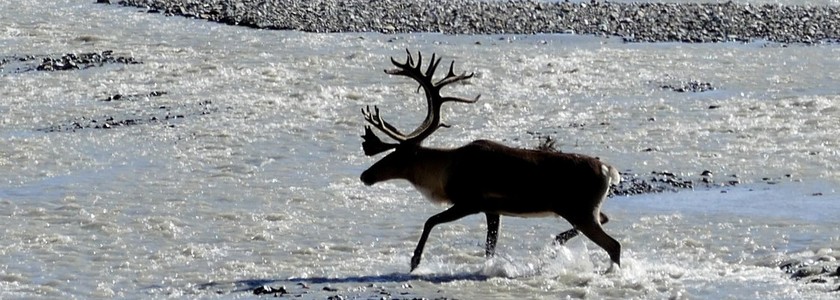

Scientists are using decades worth of scientific observations to determine the round-trip migration distance of caribou compared to a number of other animals. A study published in Scientific Reports on October 25, 2019 determined that caribou have the longest migrations. The study focused on herds in Alaska and Canada and determined they travel up to 1,350 kilometers (~838 miles) per year! To put this into perspective, that is about the trip between Los Angeles, CA to Portland, OR! Runner-ups in migration distances are the mule deer, traveling up to 772 kilometers (~480 miles) in Wyoming and Idaho, followed by blue wildebeest in the Serengeti of Africa, who travel around 600-700 kilometers (~372-434 miles).
The researchers calculated migration distances of these animals by measuring a straight line between two migratory end points, and then doubling the numbers to calculate the distance for the round-trip. The distances mentioned above of land animals is pretty impressive, but compared to migrating birds and insects, the distances fall pretty short due to less infrastructure, such as roads, fences, and walls.
According to Claire Teitelbaum, an ecologist at the University of Georgia in Athens, she mentions that as more infrastructure is being built, this will continue to hamper some animal's land migrations. She further mentions that as the climate changes, this could also alter the environment and the availability for foods, making migration even harder for land animals. In the past 20 years alone, migratory distances of a herd of caribou in Canada have been shortened by 150 miles! Another ecologist in the Netherlands, Marlee Tucker, mentions that "we will see migration distances declining, rather than increasing into the future" and further mentions that natural areas are shrinking across the globe.
Most animals with long migration paths take place in Alaska and Canada, where this is more natural, wild terrain. Researchers are trying to understand where animals roam so scientists and policy makers can prioritize which areas to preserve. The information could also help build more wildlife bridges and tunnels across the world, to help encounter less man-made infrastructure.